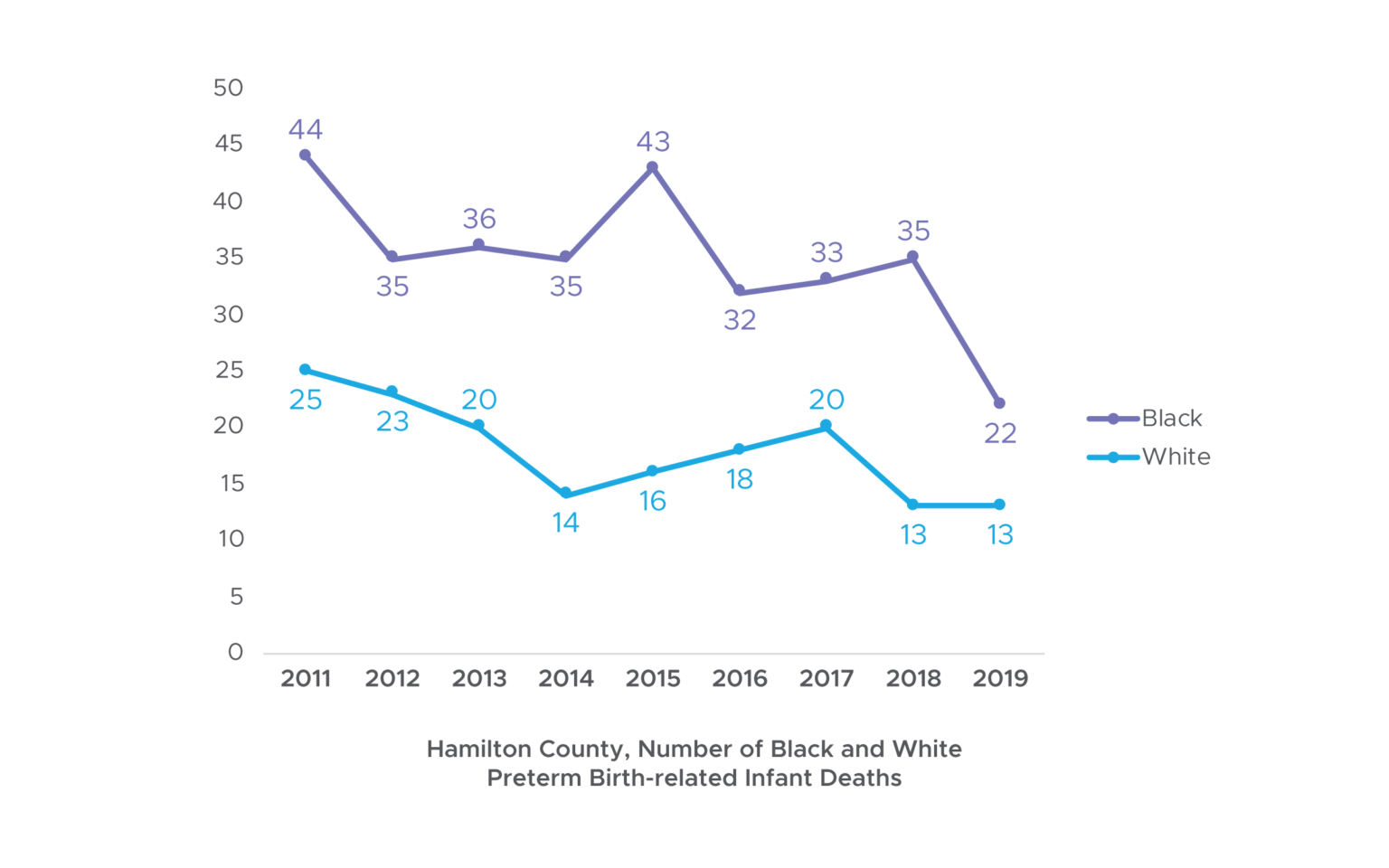Black Infant Deaths Reach Record Low in Hamilton County
Post Date: June 26, 2020 | Publish Date:

Much More Work Ahead: 5-year data reveals strong need to continue focus on improving Black outcomes
Hamilton County saw 14 fewer Black infant deaths in 2019—a 24% decrease in Black infant mortality compared to the previous five years, according to a new report from Cradle Cincinnati.
This is the fewest number of Black infant deaths on record in Hamilton County and comes as a community of partners is focused squarely on improving a longstanding racial disparity in birth outcomes, the report says.
Trend 1: Black preterm birth-related deaths fell.
The leading cause of infant death is extreme preterm birth. In 2019, Black babies born before the end of their mother’s second trimester fell in Hamilton County, driving the overall decrease in infant deaths.
Trend 2: Improvement was concentrated in a few key neighborhoods.
More than half of recent improvements in preterm birth came from three communities: Price Hill, Avondale and Villages at Roll Hill. Each of these communities had unique teams of healthcare and social service partners working intensively with families through Cradle Cincinnati Connections. This work, funded by bi3, the State of Ohio and the US Health Resources and Services Administration, is now being spread to 12 communities throughout Hamilton County.
Trend 3: A community of partners, led by Black women, has rallied around improving disparity.
Long-awaited positive trends in Black infant mortality only happened because an entire community of partners have rallied around this cause.
- Prenatal care systems have undergone implicit bias training and are redesigning their care to better serve the needs of Black women.
- A wide network of social service providers has partnered with the Ohio Department of Medicaid to prioritize reducing Black infant deaths.
- Public health departments have made reducing racial disparity in birth outcomes central to their strategic plans.
- Organizations not traditionally seen as focused on health, such as Cincinnati Metropolitan Housing Authority, have stepped into leadership on this issue.
View more data from the report





